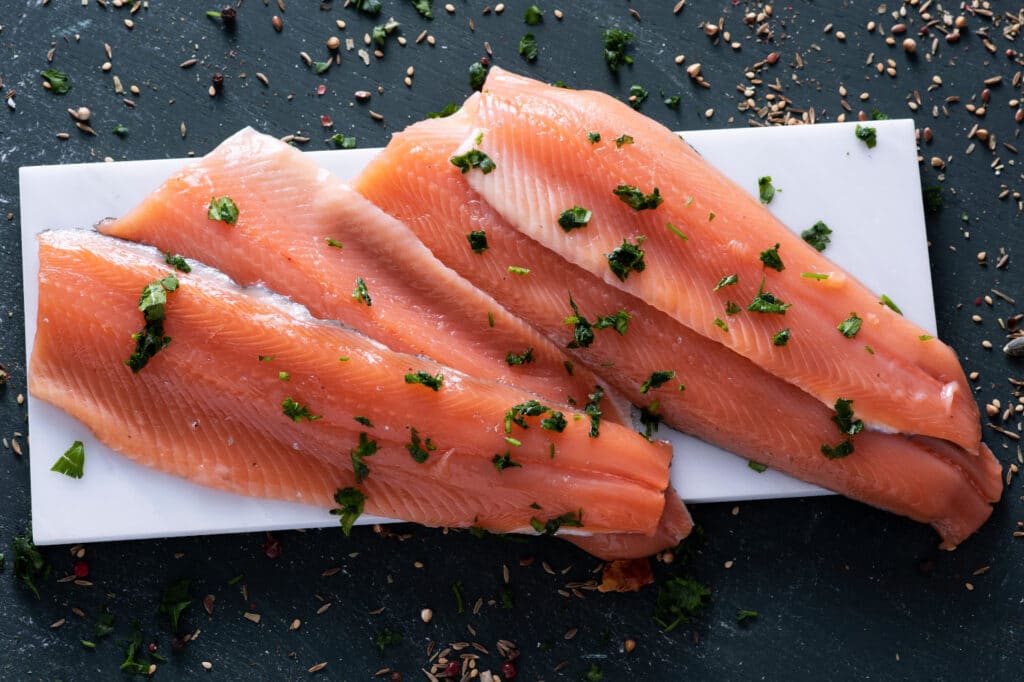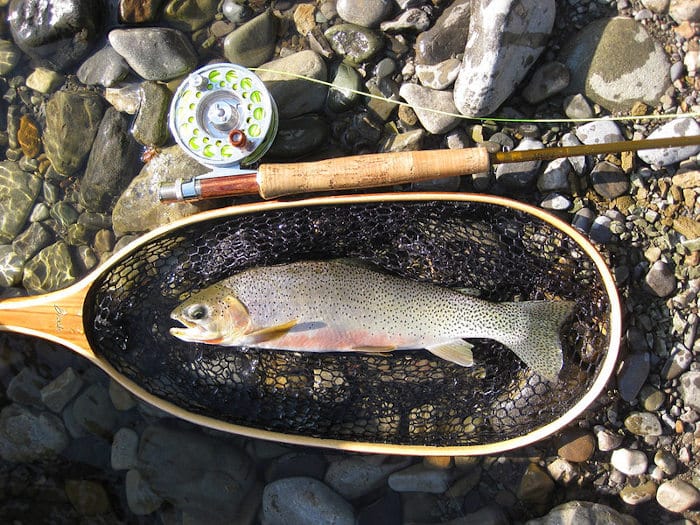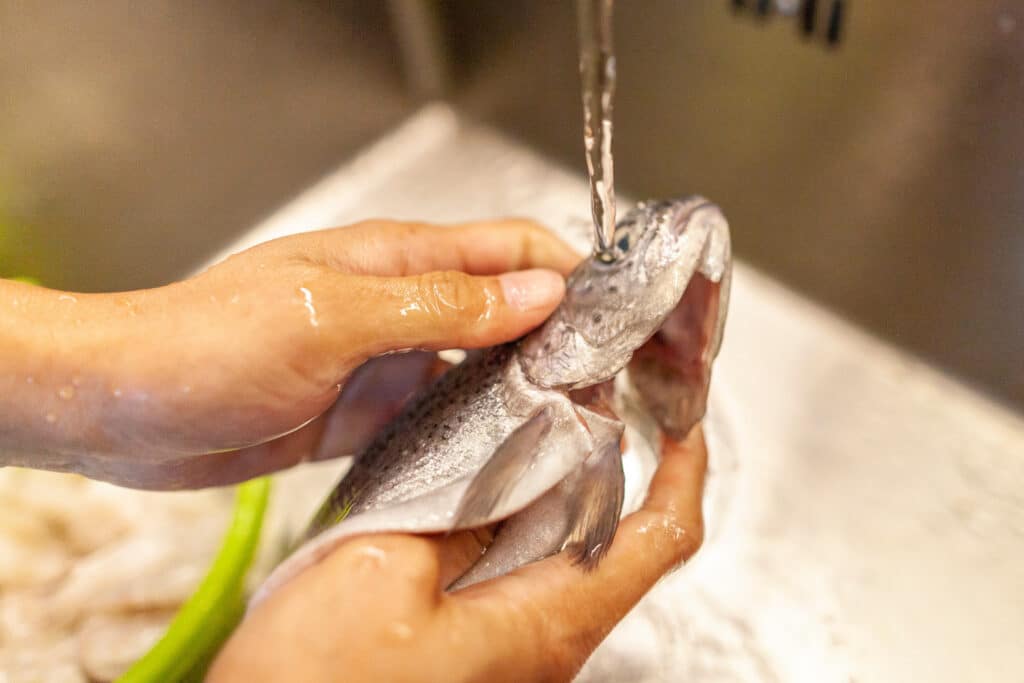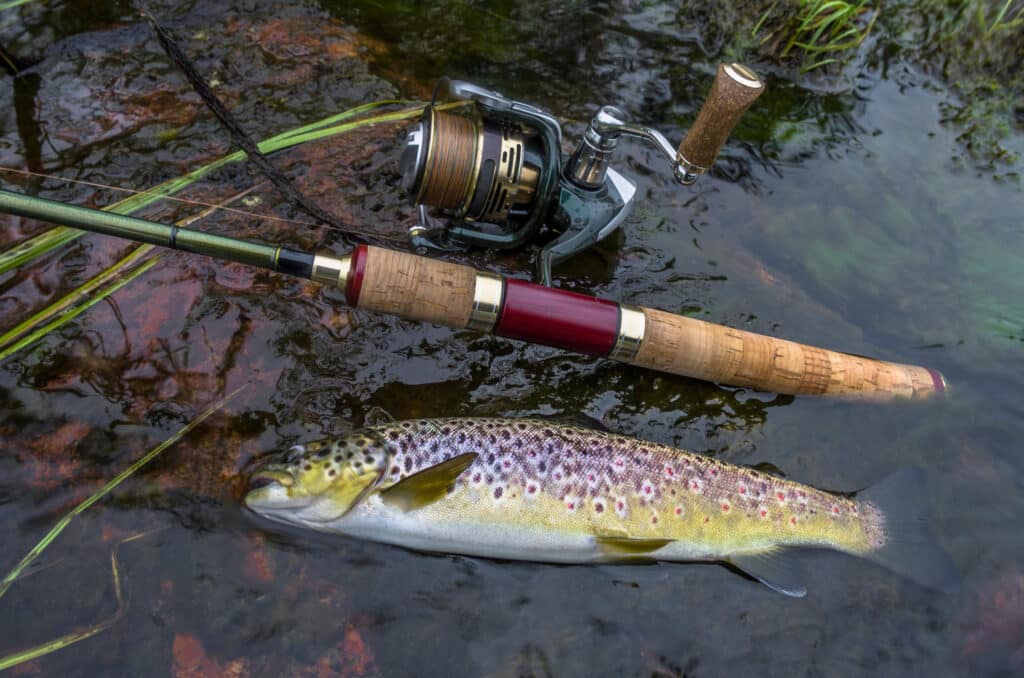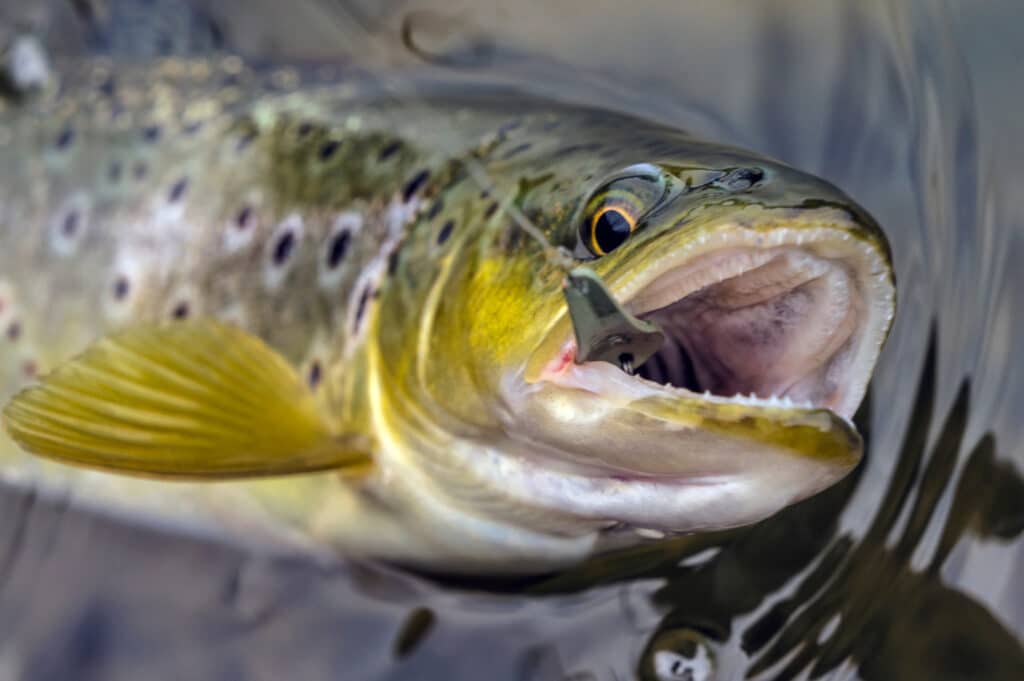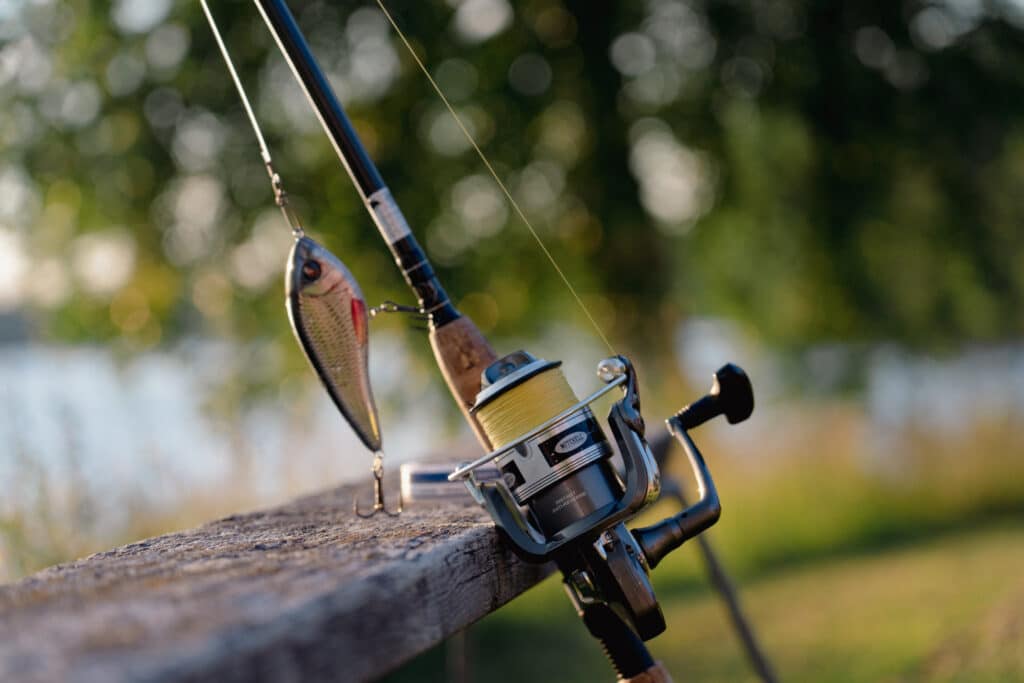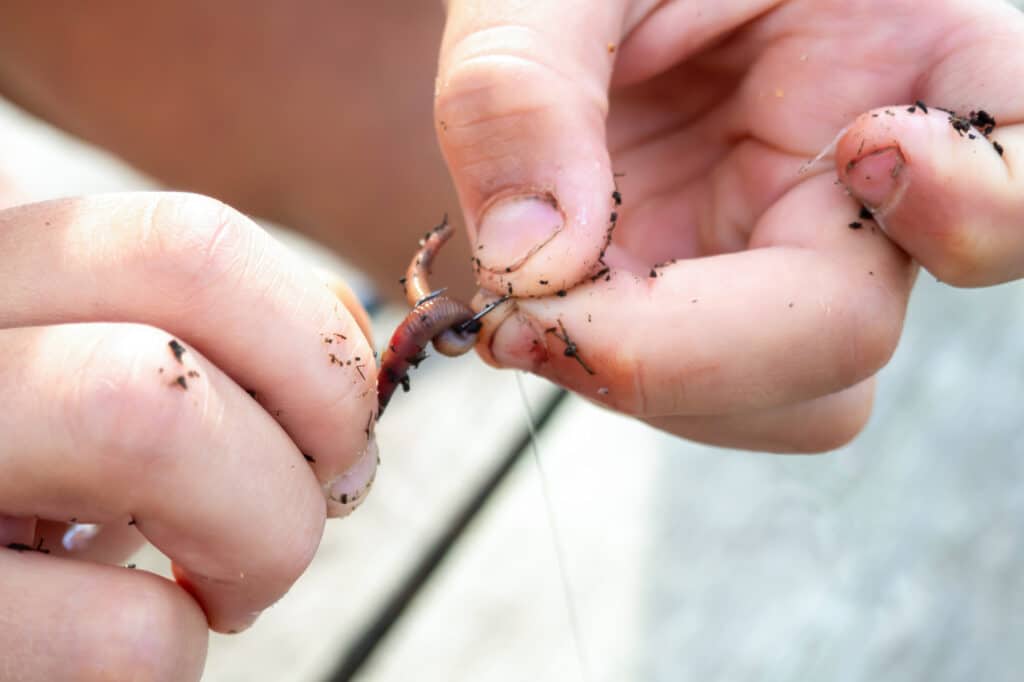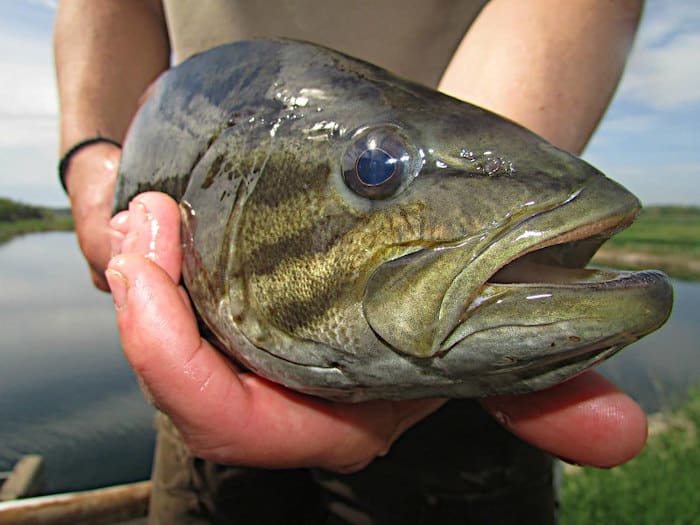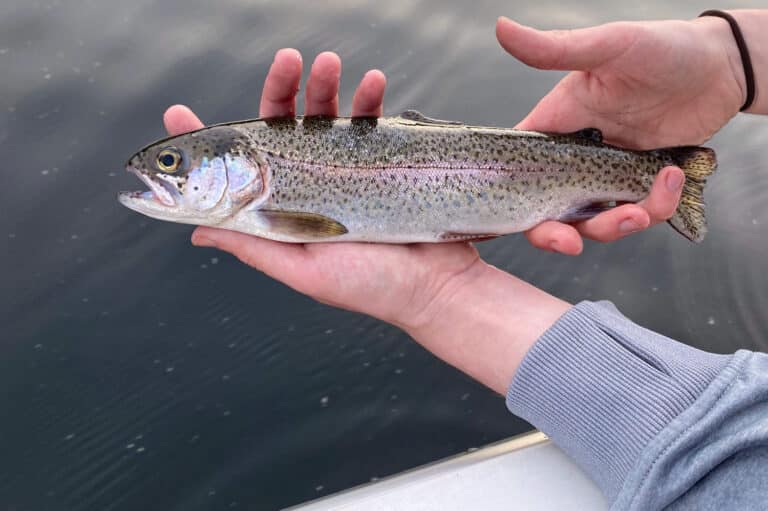As someone who loves unique, international food, I’m constantly pushing the boundaries of my wild foods recipes. Salmon sushi is arguably my favorite food, but my salmon fishing opportunities are pretty limited. I have wild trout practically in my backyard, though, so the natural question for me is: can you eat trout raw?
Short answer: If by “raw” you mean fresh out of the water, then generally the answer is no. Fish of all kinds, both freshwater and saltwater, carry harmful parasites and shouldn’t be consumed raw. If you absolutely had to eat trout raw, you’d be rolling the dice; you might not get sick, but the odds of picking up a parasite are way too high to do it regularly.
But that doesn’t mean you should give up on trout sashimi. There are a few things you can do to greatly reduce the risk of eating fish raw, and I’ll go over the details in this article. I’ll also go over what you should do if you find yourself in a survival situation where raw trout is the only option.
Read on for the lowdown, or use the table of contents to find the info you need.
- The Risks Of Eating Raw Trout
- Are Saltwater Fish Actually Safer To Eat Raw Than Freshwater Fish?
- How To Freeze Trout And Other Fish For Eating Raw
- Does Raw Trout Taste Good?
- Other Things To Consider When Eating Raw Trout
- How To Eat Raw Trout If You Can't Freeze It
- How To Fillet Trout For Eating Raw
- Final Thoughts
The Risks Of Eating Raw Trout
Before I get into the things you can do to reduce your risks while eating raw trout, it’s helpful to know what those risks actually are.
All species of fish, both saltwater and freshwater, carry parasites that could harm you if you eat them. Bacteria isn’t the main concern; it’s really harmful parasites like tapeworms, roundworms, and flukes. These can cause everything from extreme nausea to fever to even anaphylactic shock. Liver flukes can even cause bile duct cancer.
The reality of these parasites is that although they’re not uncommon in freshwater fish, it’s relatively rare for humans to get infected by them (even for people who regularly eat raw fish; see this article from Meat Eater for a more detailed look). They also tend to be localized, with most of the fluke infections occurring in East Asia and South America. If a certain parasite isn’t prevalent in your area, you’re much less likely to get sick.
The consequences can be so severe, though, that I try to avoid eating them at all costs. That goes for raw fish from the ocean, too; they’re not as safe as many of us think.
Are Saltwater Fish Actually Safer To Eat Raw Than Freshwater Fish?
It seems to be a common belief these days that saltwater fish are totally safe to eat raw, while freshwater fish aren’t. The proof is everywhere; Instagram reels and youtube channels are full of people cutting up their tuna, mackerel, and salmon and eating it right on the boat.
But it turns out that their safety is mostly a myth. Though these fish are probably safe to eat raw if you buy them at the grocery store, that has nothing to do with the fish and everything to do with how they’re handled.
The Truth About Parasites In Fish
Both fresh and saltwater fish can carry harmful parasites, but the most common by far is the Anisakis roundworm; found exclusively in saltwater species. Then there are flukes (or flatworms), more common in freshwater fish but found in saltwater fish, too. Finally, there’s the tapeworm, which is exclusive to freshwater fish. Tapeworms are very rare compared to anisakids, but their in-your-face nastiness is probably the reason freshwater fish, including trout, get a bad rap.
The other reason for the myth is that saltwater fish are typically flash-frozen before ever hitting the market, rendering them safe to eat raw (more on that below). And the reason for this is really just that these are the fish we expect to be able to eat raw; mostly because historically, the folks that liked to eat raw fish just happened to prefer saltwater fish over fresh ones.
All of the parasites listed above are killed easily when you cook fish, so cooking your trout is the only surefire way to remove them. But freezing fish can also destroy parasites; you just have to make sure to do it correctly.
How To Freeze Trout And Other Fish For Eating Raw
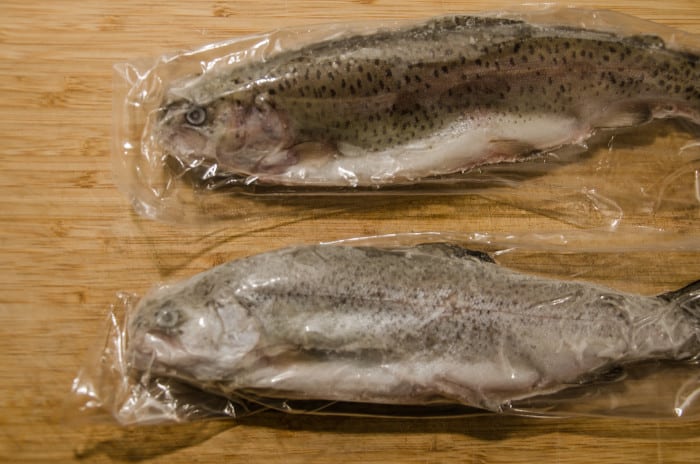
So all of that brings us back to raw trout. Although cooking is the best method, sushi made with cooked fish just isn’t the same. Luckily, freezing is very effective at killing the parasites in raw fish, too. The FDA actually requires any fish, whether from the ocean or a river, to be frozen before being served raw. So if you’ve been to a sushi restaurant in the United States, that “fresh” sashimi you had was once in a freezer (and it probably still tasted great).
The caveat is that throwing a trout in your home freezer for a couple of days doesn’t do the job. The FDA has strict guidelines for freezing fish, which are:
- Freeze fish at -4 degrees Fahrenheit or lower for 7 days, or:
- Freeze fish at -31 degrees Fahrenheit or lower until solid, then continue freezing for 15 hours, or:
- Freeze fish at -31 degrees Fahrenheit or lower until solid, then continue freezing at -4 degrees Fahrenheit or lower for 24 hours.
The problem is the average home freezer doesn’t even reach -4 degrees, let alone -31. If you’re determined, though, it’s not too hard to find ones that do. This adjustable chest freezer is only $259 and goes down to -8 degrees; perfect for the wild sushi fanatic.
If you do decide to freeze your fish at home, make sure to use an internal thermometer to check that the thermostat is measuring the true temperature. To be extra safe, go beyond the FDA requirements. I set my freezer at -8 degrees and give it 10 days to make sure my trout is safe to eat. In my experience, this has zero effect on the final product (as long as you vacuum pack all your frozen fish).
As long as you have a little time and a cold freezer, your fresh trout can safely be eaten raw. And you definitely should try it, but not all trout is good enough to be eaten as sashimi.
Does Raw Trout Taste Good?
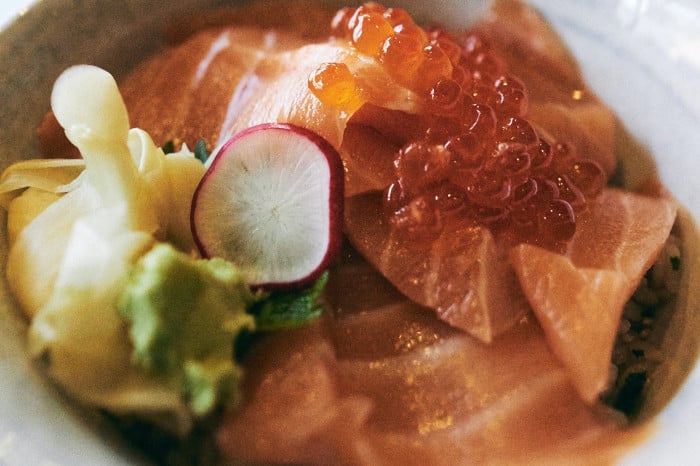
For more info on how the taste of trout can vary, check out my post on it. But the reality is that not all trout is good enough to be worth eating raw.
Stocked rainbow trout from a local warm pond are likely to be soft, if not totally mushy, and the flavor tends to be pretty fishy (because of the fish pellets they’re raised on). I would stay far away from them when making sushi.
But what about wild brook trout, caught yourself from a coldwater mountain stream? These trout have firm, orange meat with a fresh flavor, and are perfect for raw preparations.
In general, the colder the water and the more fast-moving it is, the better that trout will taste raw. This is because in rivers and mountain streams, trout have to develop stronger (i.e. firmer) muscles to work with the current, and they tend to eat primarily insects as opposed to algae. When it comes to eating trout raw, think cutthroat trout, brook trout, and even wild, mountain rainbow trout.
Even the best raw trout still won’t taste like salmon. But they’re delicious and have a mild flavor, perfect for simple nigiri and ceviche alike. The best part is you don’t have to live near the coast to harvest them yourself.
Other Things To Consider When Eating Raw Trout
Parasites are by far the most harmful downsides related to eating trout raw. But we have bacteria to deal with, too, and freezing doesn’t kill that.
Luckily, bacteria is a relatively minor issue. Everything you eat has some bacteria on it, and most of it doesn’t matter enough to worry about. But regular food poisoning is still miserable, so if you know you’re going to eat trout raw, it’s best to take extra care while cleaning and preparing it to minimize the risks. Here are a few best practices for properly handling raw trout (or any seafood, for that matter):
- Thoroughly wash your hands before handling raw fish at any time, before or after freezing.
- Keep fish cold immediately after killing, ideally directly on ice.
- Wash fish with clean, fresh water if necessary
- Pat dry after washing (excess moisture increases bacterial growth)
- Thaw frozen fish overnight in the refrigerator, or thaw under cold water if you need it quickly; never thaw at room temp or in the microwave
- Wash and sanitize any cutting boards used to prepare raw fish, before and after
Following these guidelines will keep bacteria to a minimum, and your chances of getting a stomach bug will be minor. There are always risks associated with eating any raw meat, but if you freeze the fish as described above first, then you don’t have much to worry about.
Check out the FDA guidelines on eating raw fish for a more detailed look at best practices.
How To Eat Raw Trout If You Can’t Freeze It
Freezing trout beforehand is the best way to eat it raw, and the only one you can really be confident in. But there are situations where you might need (or want) to eat trout raw and freezing just isn’t an option.
If you’ve found yourself in a fire-less survival situation but you somehow managed to catch a trout for dinner, here’s how to minimize your risk of getting sick.
- Dispatch the trout immediately after catching it
- Clean it and rinse the body with the freshest water available (ideally a stream)
- Eat it as soon as possible. Bacteria begin to grow quickly, so if you can eat the trout within a few minutes of catching it, you should.
Another thing you can do if you do have a flashlight is called “candling”. It essentially means passing fresh fillets over a bright light to be able to see any worms, cysts, or other parasites hidden in the flesh. If you do find any, you can cut them out with a sharp knife. Parasites aren’t always visible, so this isn’t a surefire method, but it’s certainly better than nothing.
These tactics by no means guarantee you’ll be able to eat trout raw and not get sick, but they give you the best shot at it.
How To Fillet Trout For Eating Raw
When I eat cooked trout, I rarely fillet them because the bones just fall right out while you eat. But raw fish preparations require deboning (unless you like crunchy sushi), and the pin bones in trout can be especially difficult to remove without wasting meat.
It can be done, though. I highly recommend watching this video for the full demonstration, but I’ll outline the steps I use below it, too (it just takes a little practice to get right).
How To Debone Trout
- Remove the head just behind the gill plate, at an angle to preserve the “shoulder” meat.
- Starting at the tail-end of the body cavity, insert a knife right along the spine and push through to the top of the fish. Follow the spine towards the tail to separate the tail section of the filet from the body. Repeat for the other side.
- From the inside of the fish, cut along the spine from head to tail, through the rib bones and down to the skin. This should allow the two sides of the trout to lay completely flat.
- Insert the tip of your knife under one ribcage, following the ribs and making shallow cuts to free the ribs from the meat.
- You can now separate the fish into two fillets by cutting through the skin next to the spine. Remove any fins left on the fillet.
Now, all that’s left are the pin bones, a single row of small bones that run through the thickest part of each fillet. You have two options here. The best method for the final product is to remove each one with tweezers (or these dedicated pin bone removers). The easier way is to cut a thin slice of meat out of the fillet, taking the pin bones with it. This is the method shown in the video above, and is what I usually do unless it’s a really small fish.
I recommend doing all this before freezing, but leave the skin on to protect the meat in the freezer. Then vacuum pack the two fillets together, pressing the two meat sides together in the bag. The skin is easy to remove later and the protection it provides results in better flavor and quality of your raw trout.
Final Thoughts
Even though you can’t really have that fresh fish, riverside ceviche experience you might have been hoping for, I still highly recommend trying out raw trout. Just make sure to take care of it from the moment you catch it to the moment you eat it, freeze it properly, and pick the right species for the best flavor. Follow those rules and you’ll have some super tasty, wild-caught trout sushi on your dinner table.

